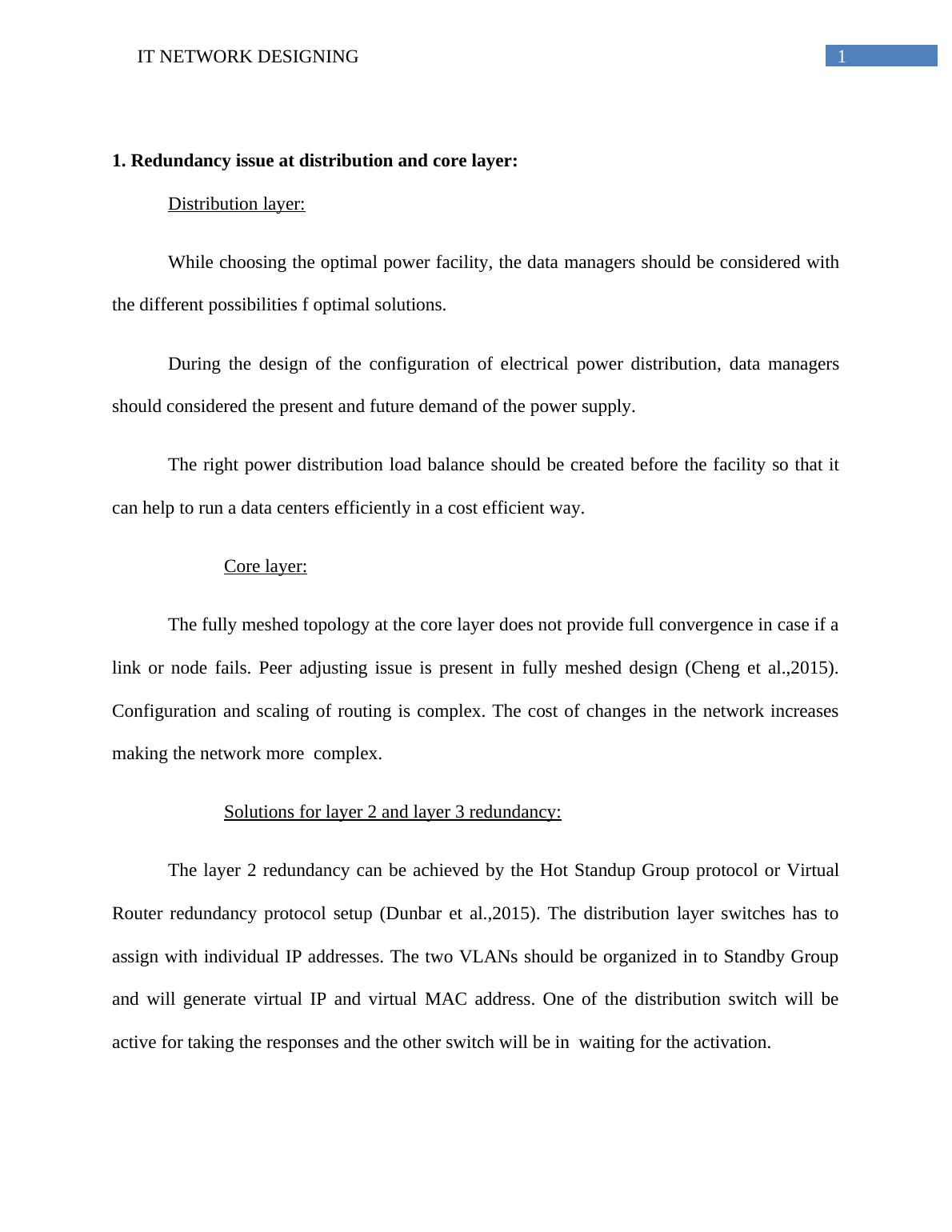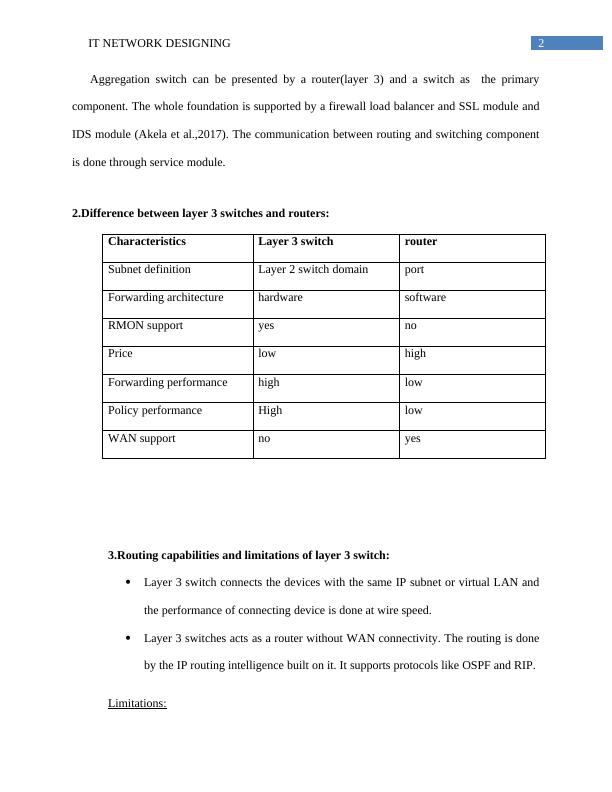Information Technology Network Design
6 Pages780 Words27 Views
Added on 2021-06-14
Information Technology Network Design
Added on 2021-06-14
ShareRelated Documents
End of preview
Want to access all the pages? Upload your documents or become a member.
Network Designing
|4
|947
|64
IT Networking Designing - Assignment PDF
|4
|762
|35
Basic Requirements of a Network
|13
|822
|11
Network Design and Implementation | Assignment
|5
|1463
|388
Network Design and IP Addressing Report 2022
|11
|1570
|30
A Presentation on ICT Networks
|13
|828
|10



